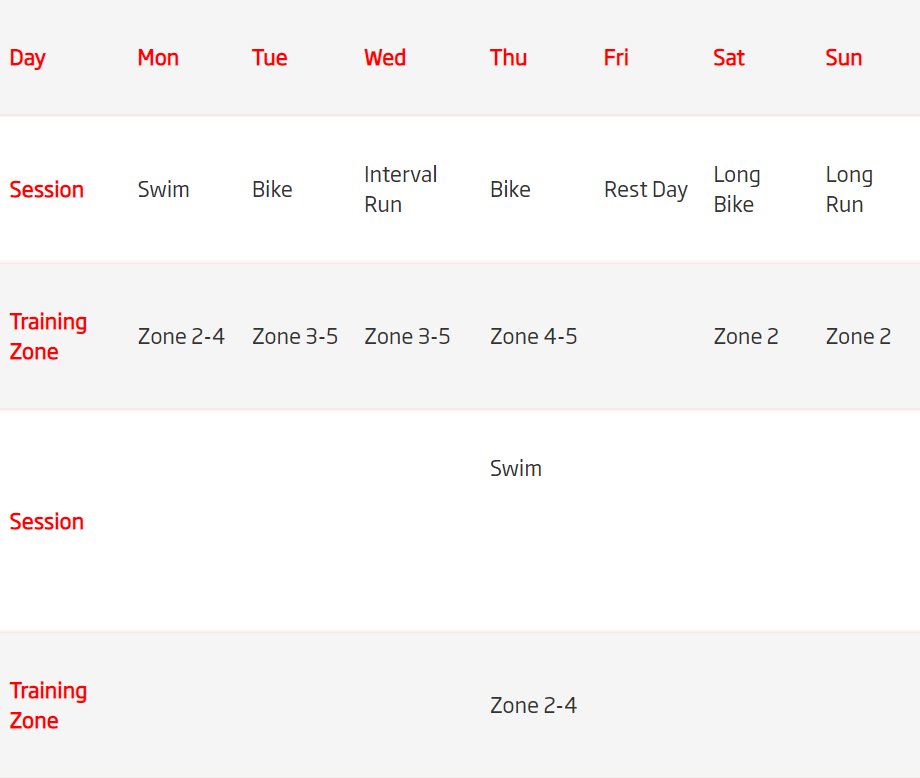Get started with a free trial.
THIS HEART RATE TRAINING WILL BOOST YOUR ENDURANCE
Have you signed up for an endurance event this year? Whether you’re a seasoned pro or just getting started, a simple heart rate monitor can be a very helpful training tool. It can tell you precisely how hard your heart is working – and with a bit of know-how, you can use this data to make the most out of your training sessions.
If you’re preparing for an event, like a fun run, triathlon or obstacle course, you’ve probably heard the advice ‘don’t go too hard too soon’. For decades, endurance athletes have been using heart rate data to train longer and harder while limiting the effects of lactic acid build up (a cause of fatigue).
Planning and preparing your training sessions, and tracking your progress with heart rate data is a sure fire way to set your body up to perform at its peak and prevent burning out early.
WHAT IS LACTIC ACID?
Do you know that burning sensation in your muscles during or after intense exercise? That’s your body producing lactic acid. But before explaining what lactic acid is, it’s important to understand the difference between aerobic and anaerobic processes.
During low intensity exercise, when our bodies generate enough energy for our muscle cells to contract repeatedly without much fatigue – this is done aerobicly – using oxygen to generate the energy.
When intensity increases, we need a quicker method of energy production to match the intensity of the exercise. An anaerobic process involves our cells relying on reactions that don’t require oxygen to fuel muscle contraction. While energy production is faster, it comes with the unfortunate by-product of lactic acid, which is created when we produce energy without the involvement of oxygen.
A build up of lactic acid ultimately prevents muscle contraction, which is why you may experience the feeling of ‘heavy legs’ and extreme fatigue.
Although it sounds like the bad guy, lactic acid isn’t necessarily something to worry about. By training regularly at high intensities, your body becomes more efficient at clearing lactic acid so you can go harder for longer.
Knowing your lactate threshold – the point at which your body starts to produce lactic acid – is key in tracking your training progress using heart rate data.
CALCULATING YOUR LACTATE THRESHOLD
Heart rate training involves setting targets in different heart rate zones. To know the optimum heart rate zone specific to your training goal, you’ll firstly need to calculate your Lactate Threshold Heart Rate (LT HR), which can be done with a simple test involving a heart rate monitor and a 5km run.
Start your heart rate monitor and spend 10 minutes warming up, gradually building your speed every couple of minutes. In the last minute of your warm up, aim for a good, challenging pace eg. difficult to hold a conversation. Once you reach 10 minutes hit the ‘lap’ button on your heart rate monitor and build a pace that is the best you can sustain for 5km.
Stop the heart rate monitor once you reach the 5km mark. Spend 10 minutes gradually cooling down and bringing your heart rate back towards normal resting rates.
The average heart rate you have monitored for the 5km phase of your run will be your Lactate Threshold Heart Rate.
CALCULATING YOUR OPTIMUM HEART RATE ZONES
A heart rate zone is the range that’s used as a guide to maintain your intensity level throughout your training session.
Each zone carries its own benefit at the various phases of an endurance race. In preparation for race day, your training may involve different workouts and exercises to improve aerobic and anaerobic capacity such as steady running, sprint intervals or climbing hills.
The most commonly used zone system for endurance training is this one below. Zones 5 (a, b and c) are particularly advanced and would be more commonly used by elite athletes rather than first timers.
When preparing for a specific event, an ideal strategy is to build a foundation in the ‘base phase’ of your training (the first 3-4 weeks). Working in the lower intensity zones will help you build the base level of fitness required to set you up for success, before moving into the higher intensity zones.
The below table is an example of a Triathlon training plan coming to end of the base phase eg. week 4 of 12 weeks.
Although heart rate training has been around for many years, it continues to be one of the most effective ways to make endurance training more precise and scientific.
